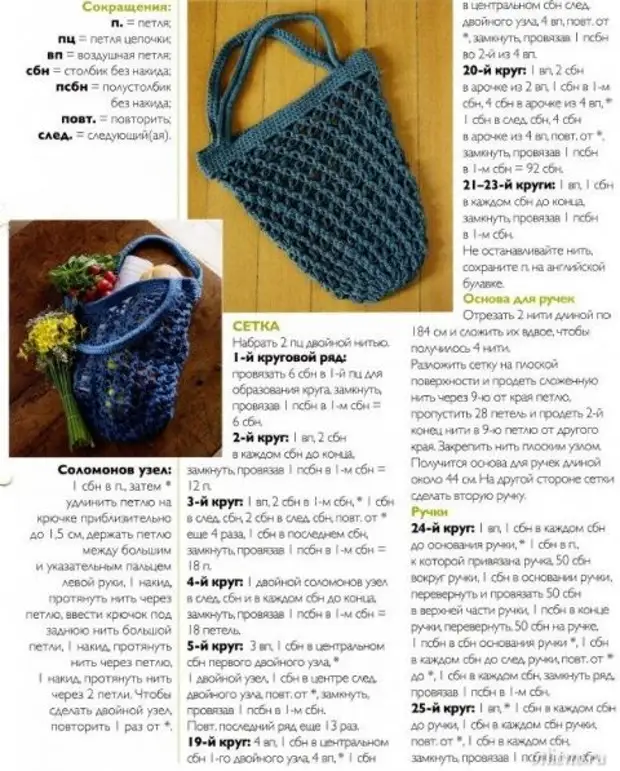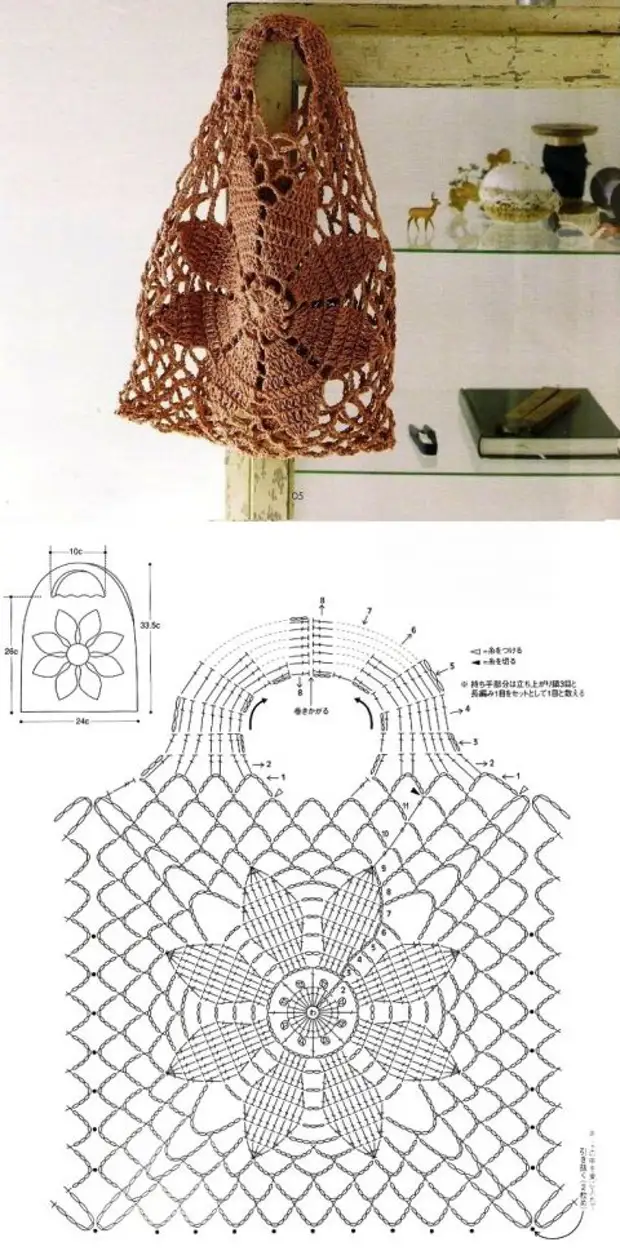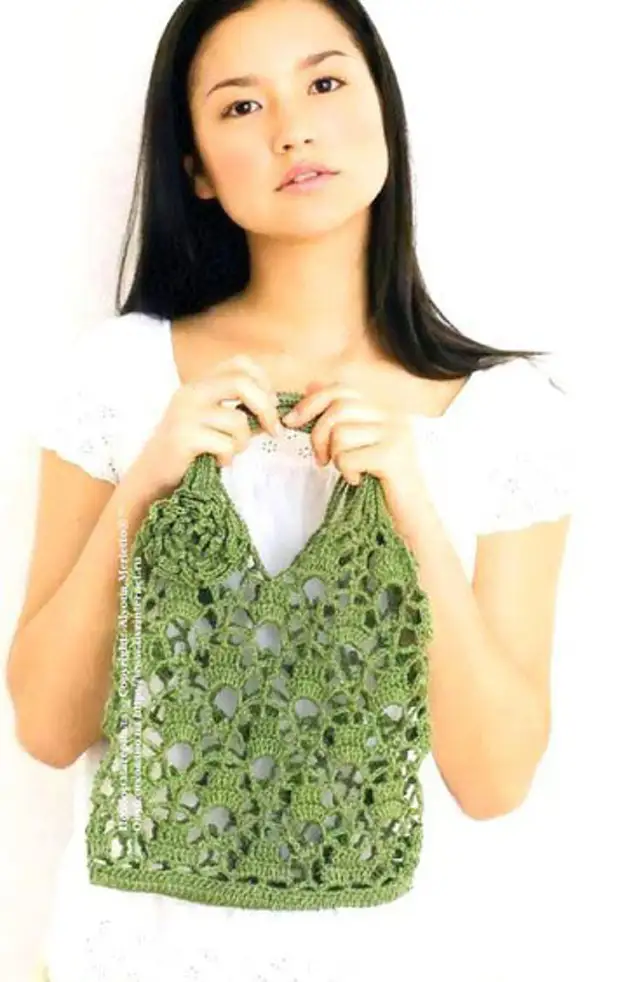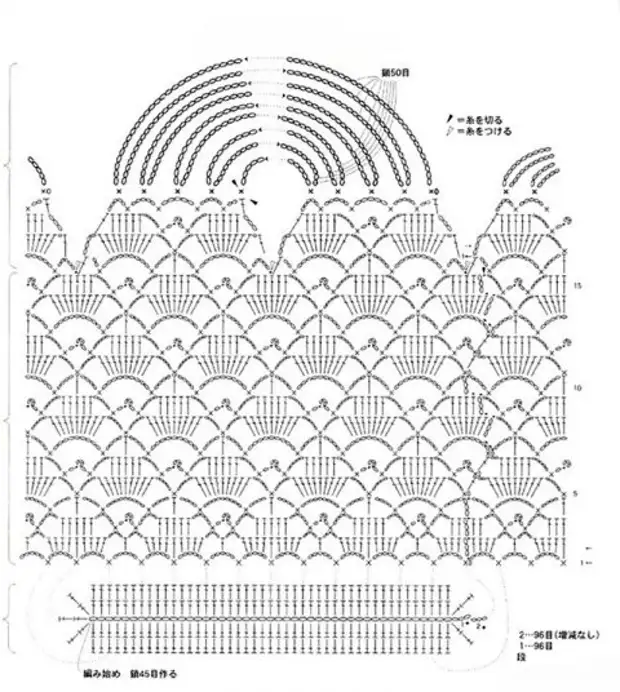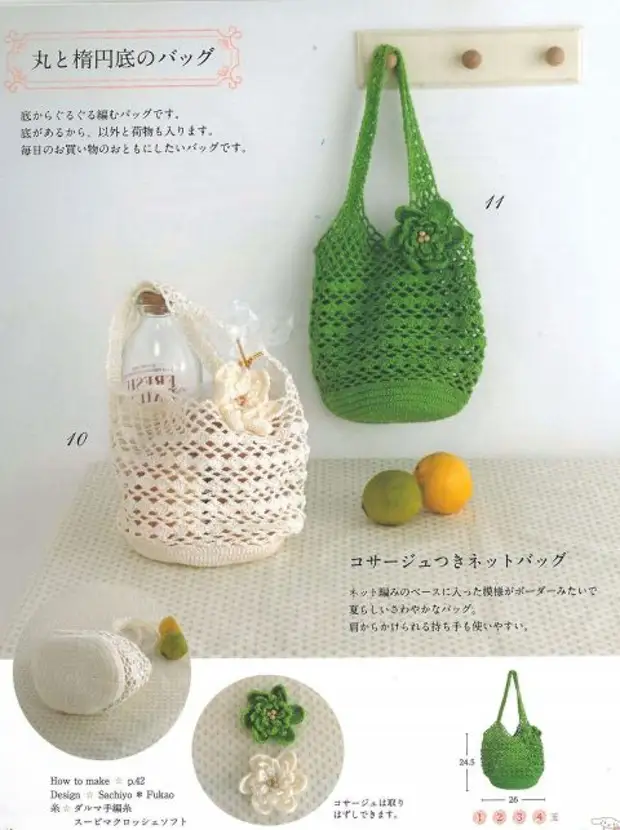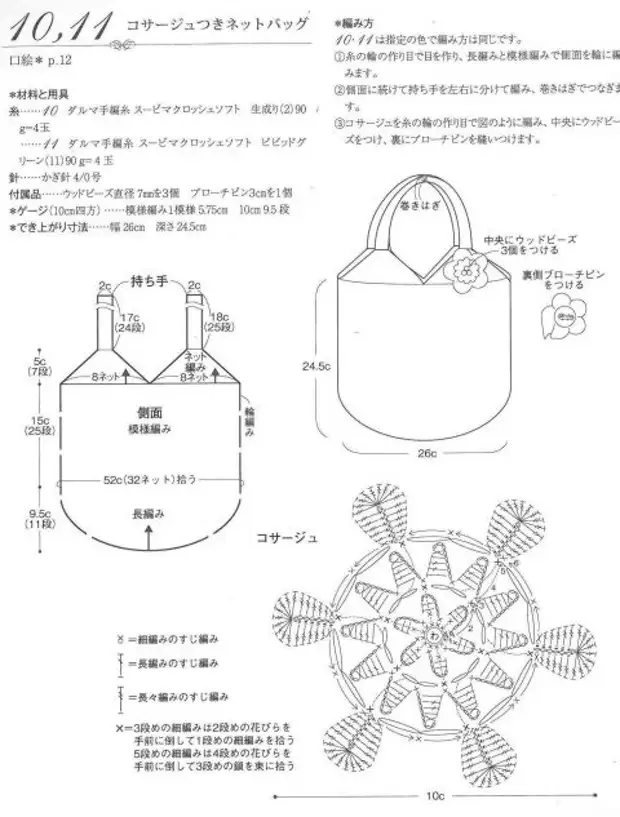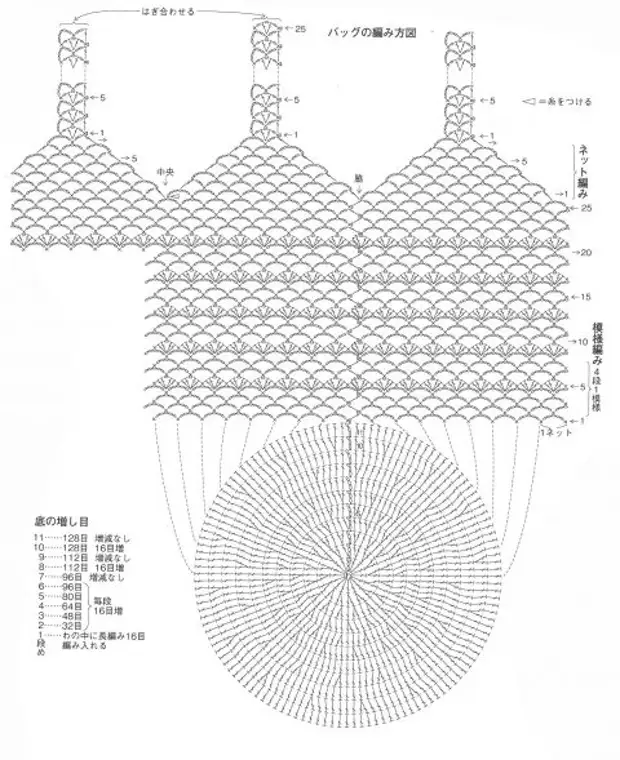Young people are unlikely to know what Avoska is, but their moms and grandmothers remember the mesh bag with this funny name. And this thing is again in fashion! But now she is returning in new capacity: a knitted or wicker shopping bag supports the trend on environmental friendliness. Surprisingly they are becoming more fashionable, and not so much to filling their products, but as a stylish accessory.
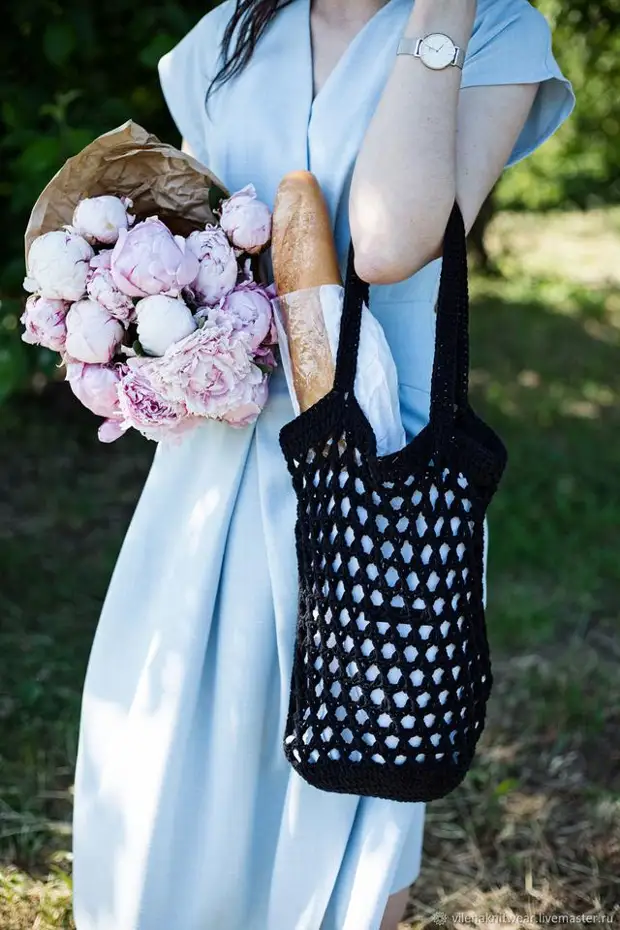
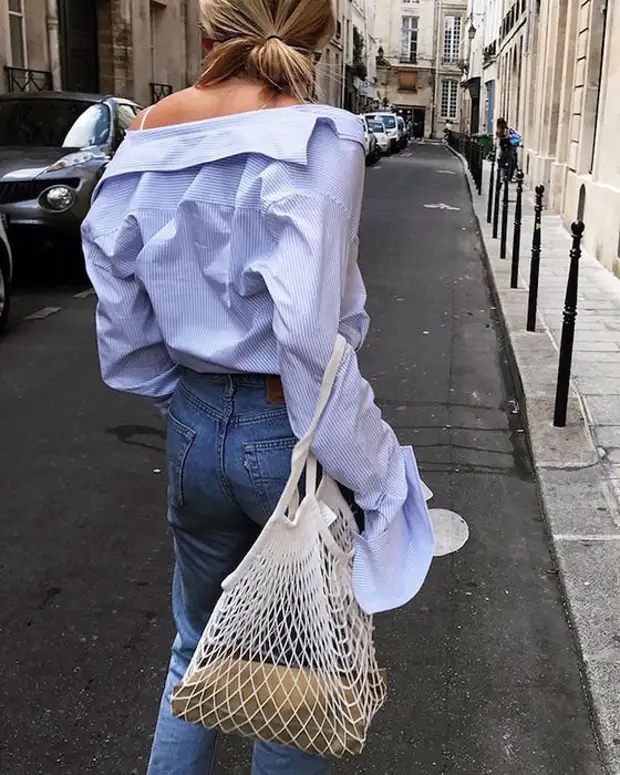
What yarn to knit a volcast? Most often for Avosk use knitted, cotton, or viscose yarn. When choosing yarn for this accessory, please note, first of all, on that, the yarn is well holding a form. Your product should be durable and should not reach. It is also better to choose such a yarn that is not too much dirty or easy to care. Among such yarn, we can recommend you knitted yarn Yarnart Ribbon, Yarnart Macrame, Cotton Yarnart Eco Cotton XL, Kartopu Natural Cotton, Slap Cotton "Yaroslav", etc. The above yarn is well holding the shape, durable to the gap and convenient in operation.
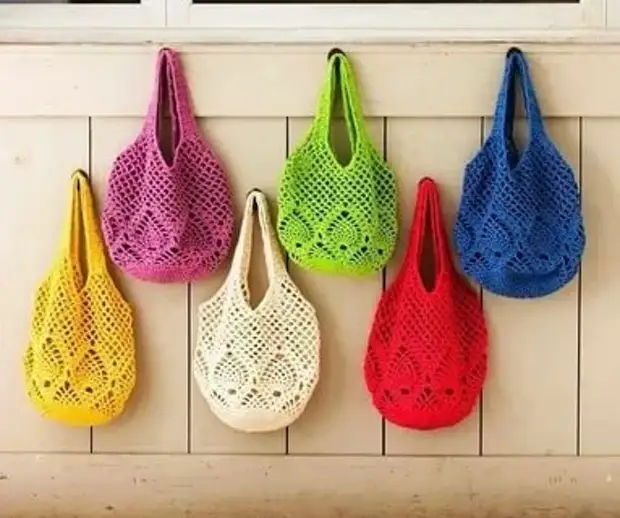
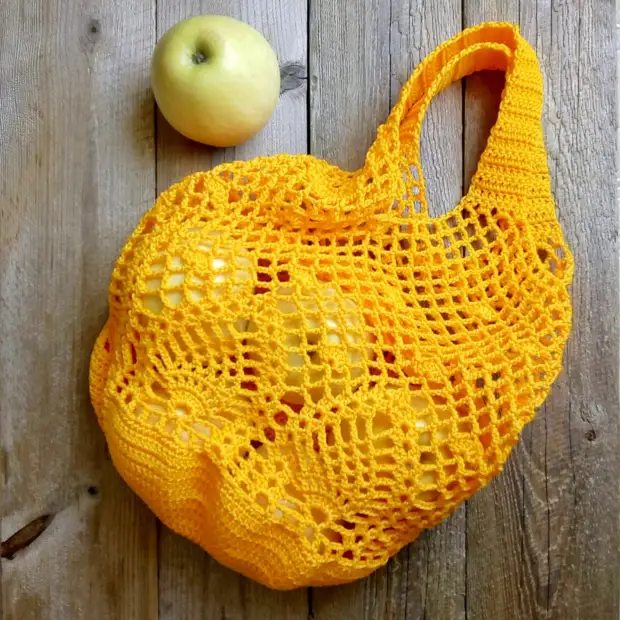
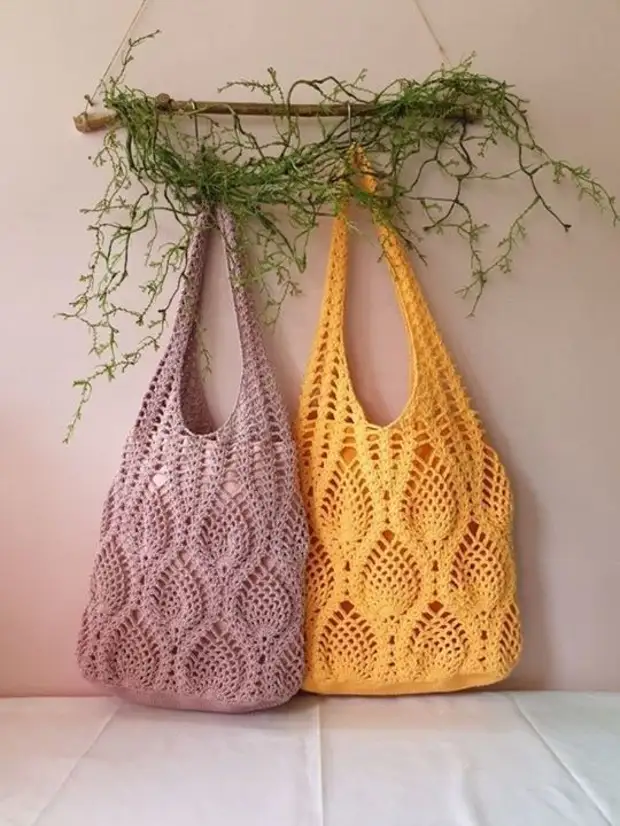
These interesting and spacious bags are quite easy to tie, but it looks very attractive.
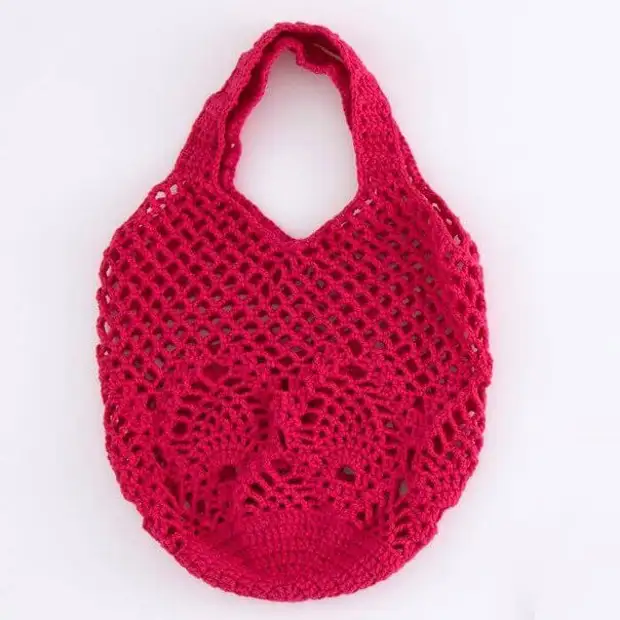
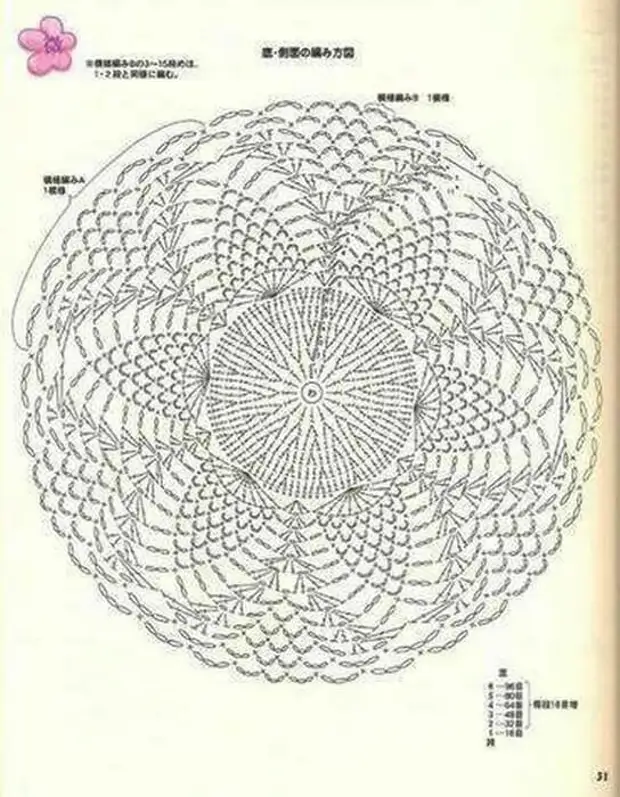
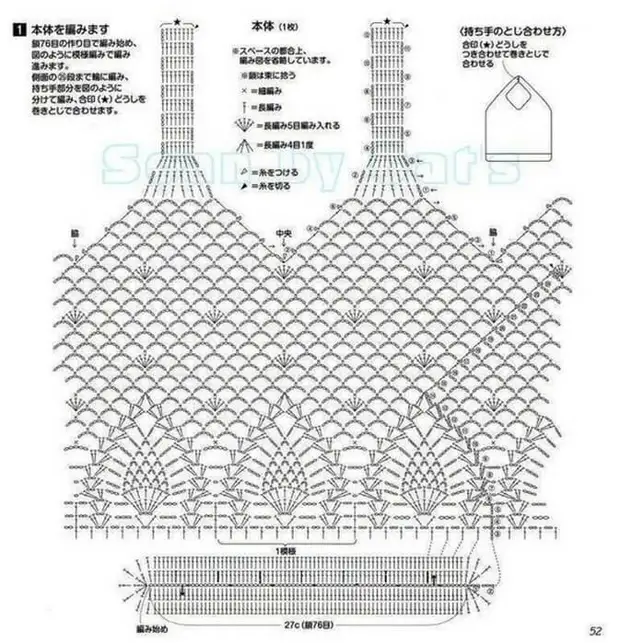
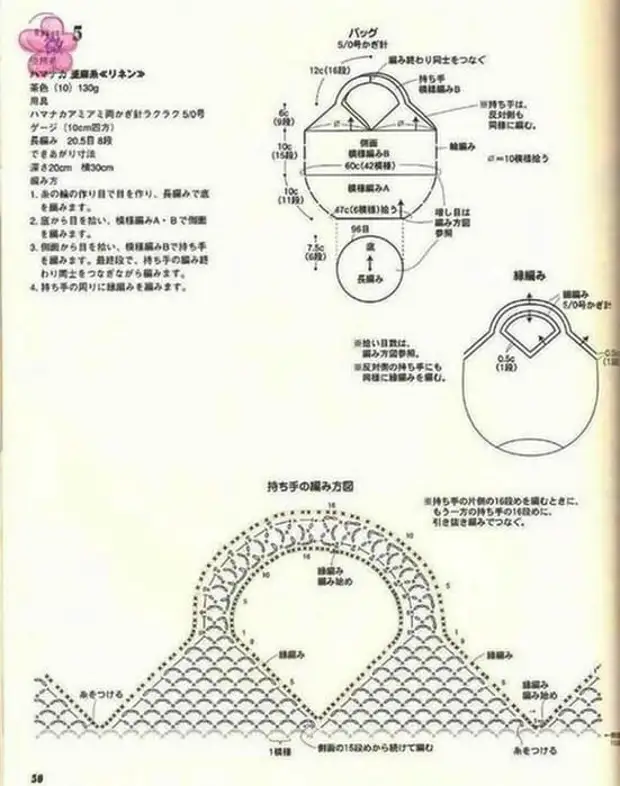
Bag-Avoska with openwork rhombuses
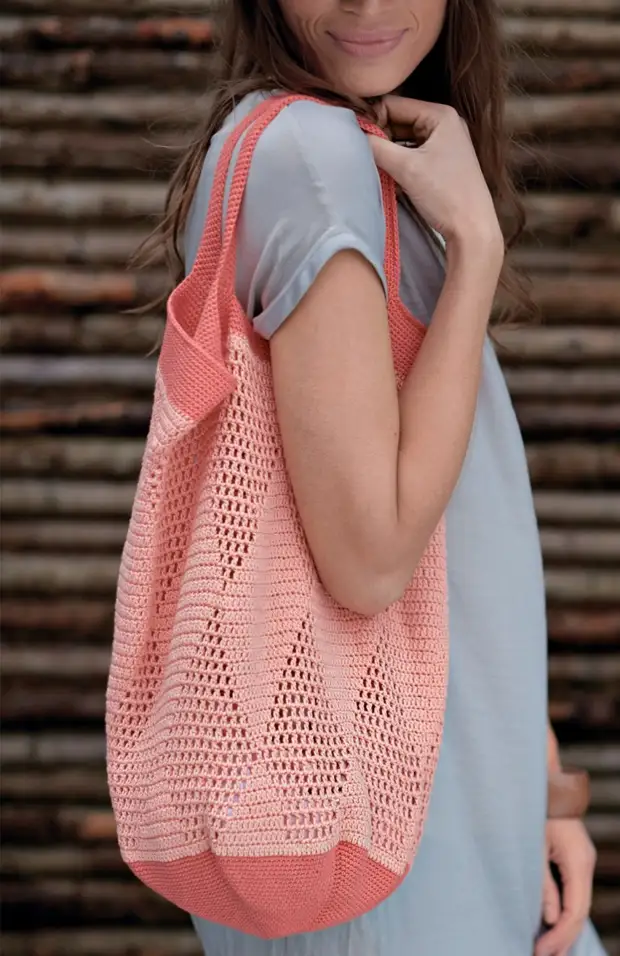
Dimensions
Height - 42 cm, width - 34 cm.You will need
Yarn (50% cotton, 50% acrylic; 50 g / 150 m) - 3 Mokes of light pink and 2 shoes coral; Hook number 3.
Completing of the work
Coral thread to dial 2 V.P. and execute 6 tbsp. B / N in 2 V.P. From the hook. Knit in a circle:1st row: 2 tbsp. b / n in each loop = 12 p.
2nd row: * 1 tbsp. b / n, 2 tbsp. b / n in the next loop *, repeat from * to * = 18 p.
3rd row: * 2 tbsp. b / n, 2 tbsp. b / n in the next loop *, repeat from * to * = 24 p.
Continue to add 6 p. In a row until 31 rubles are connected. = 192 p., Then perform 2 p. Art. B / N without add-ons.
Go to the light pink thread, tie 3 V.P. (instead of the 1st century. s / n) and execute 1 tbsp. C / N in all loops to the end of the row. Finish a number of compound. Art. in 3rd V.P.
Attention!
All subsequent rows of the "diamond" pattern start with 3 V.P. instead of the 1st Art. S / N, finish - compound. Art. in 3rd V.P.
1st row: Run 6 tbsp. S / N (Art. S / N, V.P., skip the loop) x 6. Continue: * 12 Art. S / N (Art. S / N, V.P., skip the loop) x 6 *, repeat from * to *. Finish a number of 6 st. s / n.
2nd row: Run 5 tbsp. S / N (Art. S / N, V.P., skip the loop) x 7. Continue: * 10 tbsp. C / H, (Art. S / N, V.P., skip the loop) x 7 *, repeat from * to *, finish a number of 5 tbsp. s / n.
3rd row: Run 4 tbsp. S / N (Art. S / N, V.P., skip the loop) x 8. Continue: * 8 tbsp. S / N (Art. S / N, V.P., skip the loop) x 8 *, repeat from * to *, finish a number of 4 tbsp. s / n.
4th row: Run 3 tbsp. S / N (Art. S / N, V.P., skip the loop) x 9. Continue: * 6 tbsp. C / N (Art. S / N, V.P., skip the loop) x 9 *, repeat from * to *, finish a number of 3 st. s / n.
5th row: Run 2 tbsp. S / N (Art. S / N, V.P., skip the loop) x 10. Continue: * 4 tbsp. C / N (art. S / N, V.P., skip the loop) x 10 *, repeat from * to *, finish a number of 2 tbsp. s / n.
6th row: execute 1 tbsp. S / N (Art. S / N, V.P., skip the loop) x 11. Continue: * 2 tbsp. S / N (Art. S / N, V.P., skip the loop) x 11 *, repeat from * to *, finish a number of 1 tbsp. s / n.
7th row: * Art. S / N, V.P., Skip the loop *, repeat from * to * to the end of the row.
8th row: knit as the 6th row.
9th row: knit as the 5th row.
10th row: knit as the 4th row.
11th row: knit as the 3rd row.
12th row: knit as the 2nd row.
13th row: knit as the 1st row.
14th row: execute 7 tbsp. C / N (Art. S / N, V.P., skip the loop) x 5. Continue: * 14 Art. C / N (Art. S / N, V.P., skip the loop) x 5 *, repeat from * to *, finish a number of 7 tbsp. s / n.
15th row: Run 8 tbsp. S / N (Art. S / N, V.P., skip the loop) x 4. Continue: * 16 tbsp. C / N (Art. S / N, V.P., skip the loop) x 4 *, repeat from * to *, finish a number of 8 tbsp. s / n.
16th row: Run 9 tbsp. S / N, (Art. S / N, V.P., Skip the loop) x 3. Continue: * 18 Art. C / H, (Art. S / N, V.P., skip the loop) x 3 *, repeat from * to *, finish a number of 9 st. s / n.
17th row: execute 10 tbsp. C / N (Art. S / N, V.P., skip the loop) x 2. Continue: * 20 art. C / N (Art. S / N, V.P., skip the loop) x 2 *, repeat from * to *, finish a number of 10 tts. s / n.
18th row: execute 11 tbsp. S / N (Art. S / N, V.P., Skip the loop). Continue: * 22 art. C / N (Art. S / N, V.P., skip the loop) *, repeat from * to *, finish a number of 11 tbsp. s / n.
19th row: to perform each loop under Art. s / n.
Next knit according to the instructions in the reverse order:
20th row: knit as the 18th row.
21st row: knit as the 17th row.
22nd row: knit as the 16th row, etc. - Up to 37th row (fit in the same way as the 1st row with rhombuses).
38th row: to each loop to perform under Art. S / N and go to the thread of coral color.
Top plank and handles
Start knit from the 39th row. Run 1 V.P. lifting and knit 6 p. Art. B / N: * Run 32 tbsp. B / N, tie a chain of 80 V.P., skip 32 p. and execute 32 tbsp. B / N *, repeat from * to *. Then knit 6 p. Art. B / N, having reduced 1 p. on the 1st V.P. And at the 80s V.P. to give the handles the form. If necessary, for longer handles, tie the chains from more V.P. Thread to break the ends to secure.
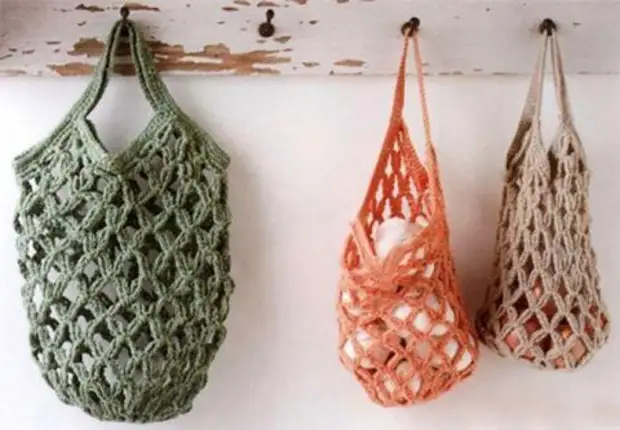
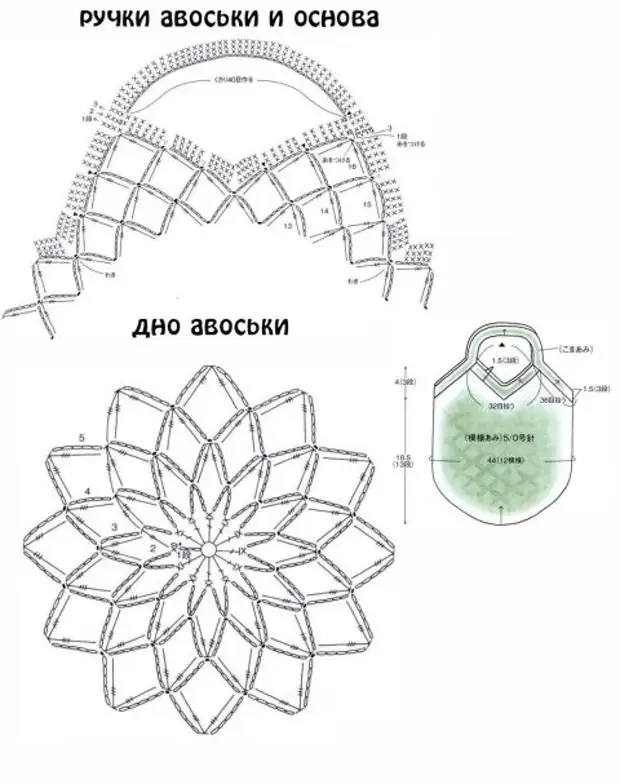
Bag-Avoska from @Shapki_ya
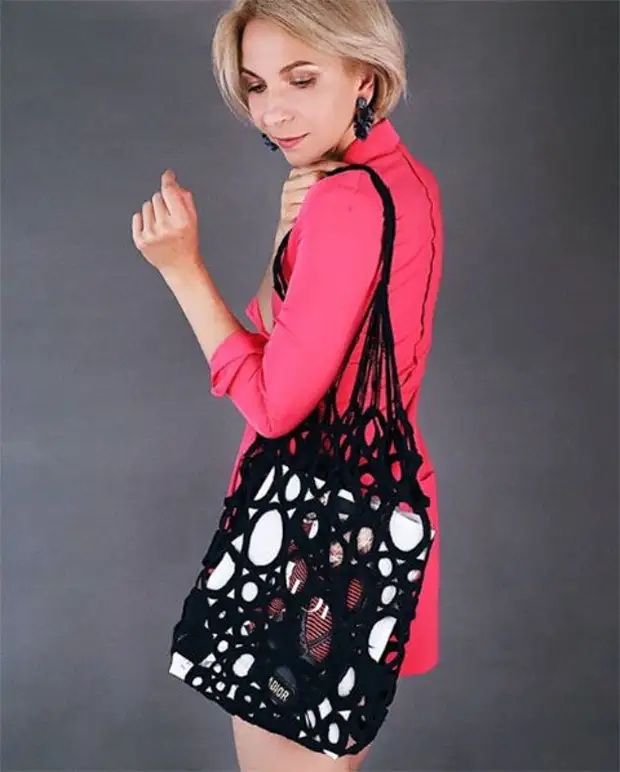
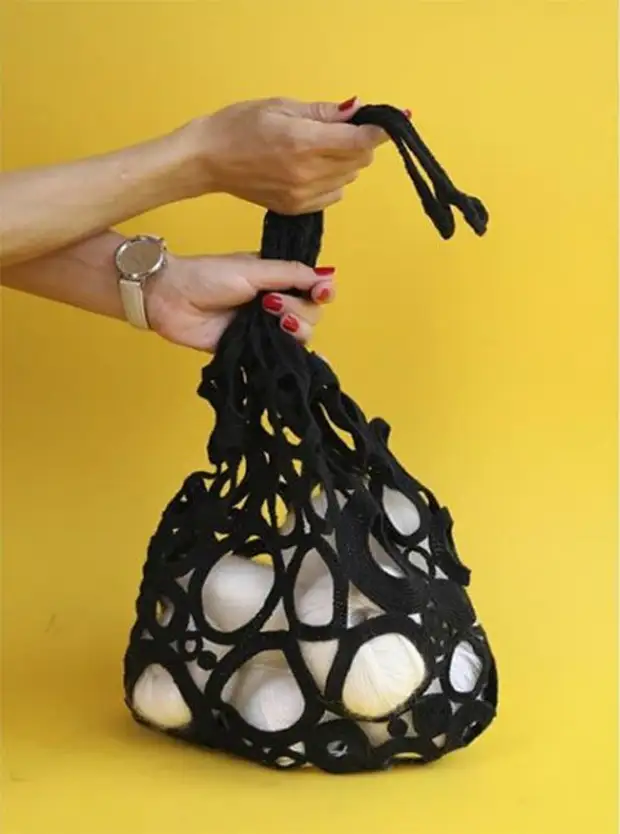
- The bag made 1.9 crochet from motifs. Hemp "hemp" from the pehorka. Metrah - 280m / 50g - quite suitable. But the composition is cotton, hemp - I did not like it (it was for this model), since hemp all the time "climbed" and made himself felt. Cotton gave softness and plasticity. This is a plus.
- Before proceeding to knitting, you need to make a pattern. On it, it is roughly drawn, what diameter will be the motives. Without pattern it will be difficult to "turn" in the right place and make symmetrical roundings.
- Sizes of a list: width - 32 cm; Height - 38 + 34 (length of the handles) see
- All motifs differ in the number of loops in the center (inner diameter) and external dimensions: the smallest inner diameter of 10 VP, the largest - 60 VP. On each size of the internal diameter accounts for various number of rows. Such a variety.
- The first rows of the first motives I knitted with the columns without nakida to each of the air loops. In each subsequent row I added 6 failures (the classical formula of the circle). An experienced way was a simpler way. I was injected immediately into the ring and exactly as much as the total should have been in the last row. For example, I knit a motive with an internal diameter of 10VP. I need to tie 4 rows. Total I tied in the ring 10 + 4x6 = 34 fail.
- All the motifs I squeezed and stitched with the usual portrait threads with a secret stitch. The tips of the motifs hid at once.
- The handles of the bag are also made up of rings, connected by VP and connected to each other and rings with a chain bag. In the center of the handle are faded.
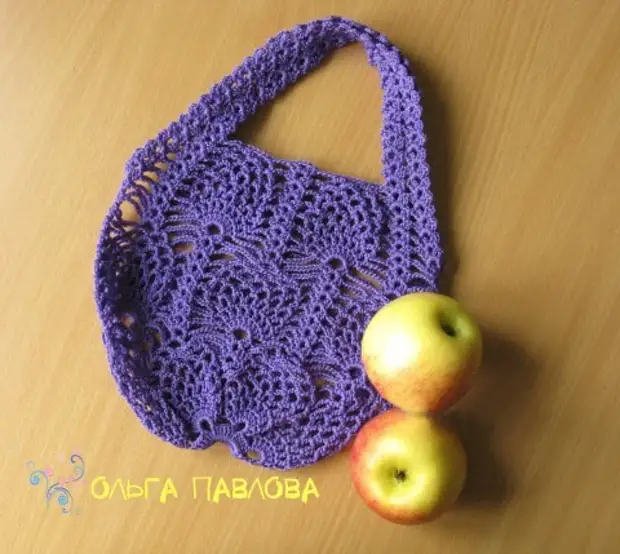
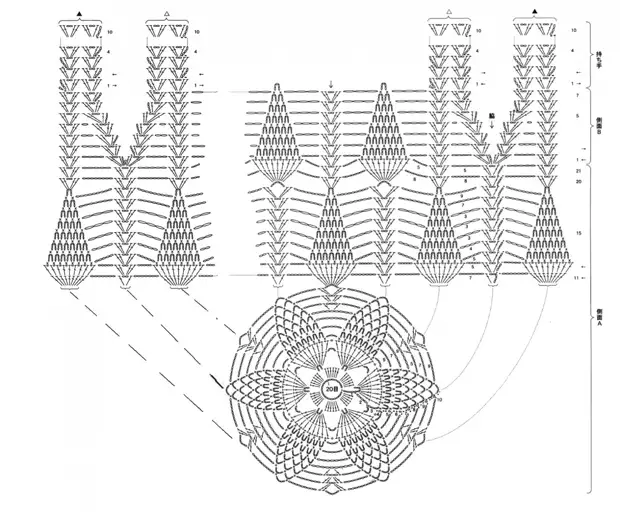
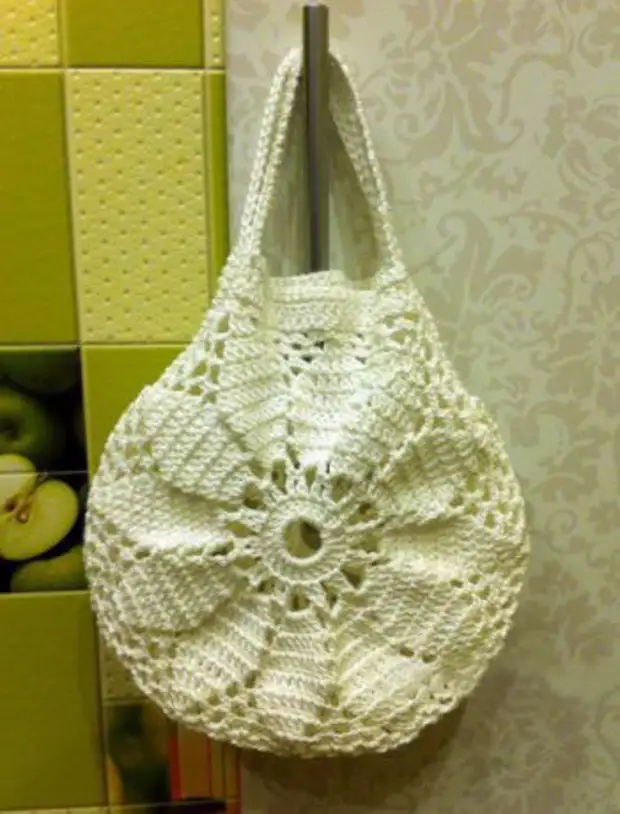
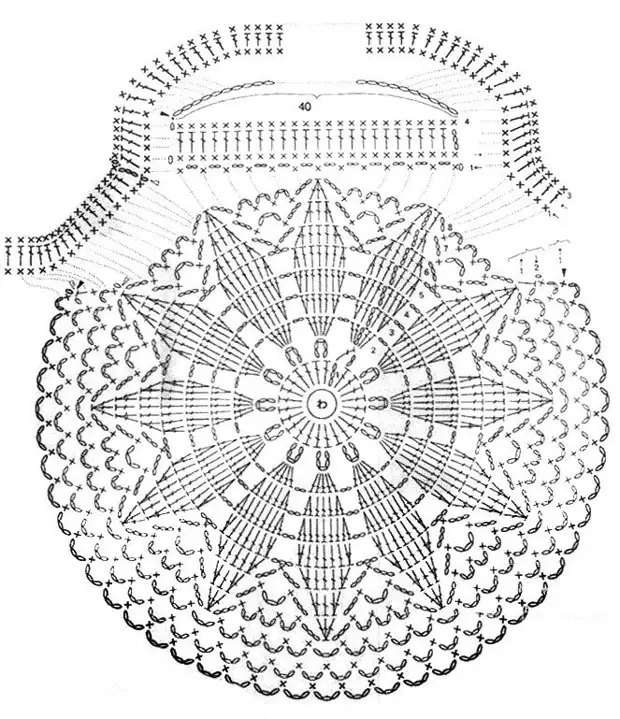
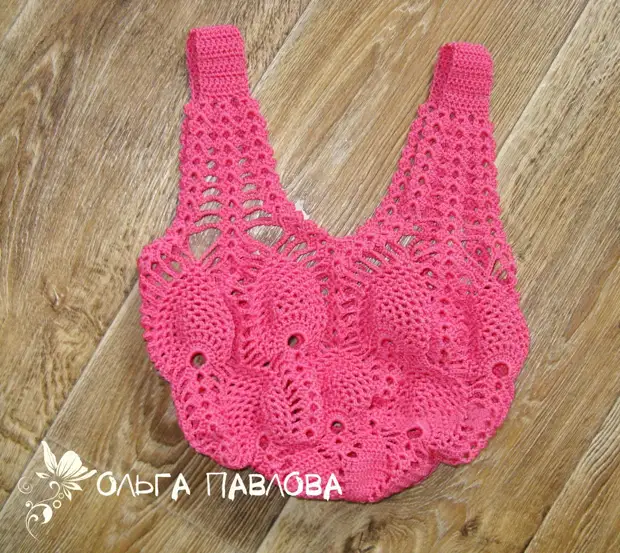
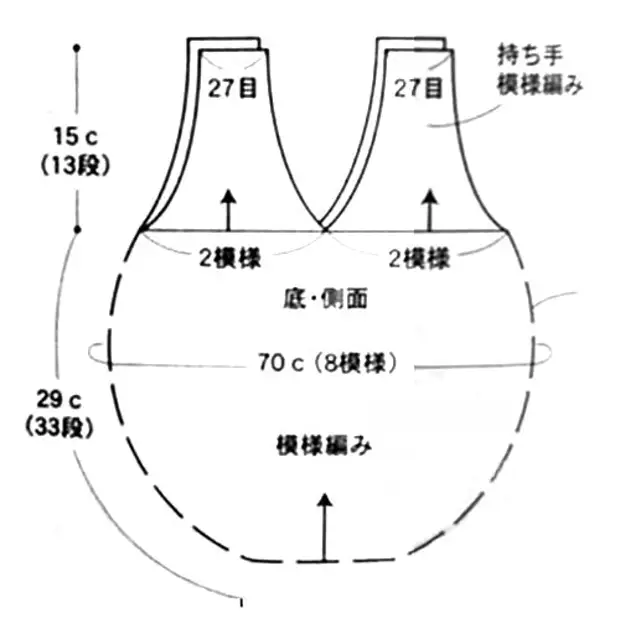
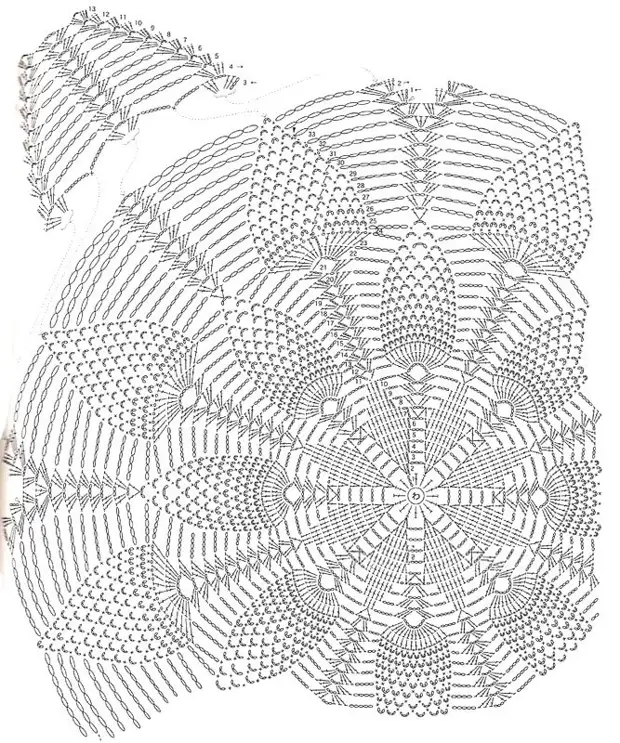
Avoska Crochet from Solomon Loops
How to knit Solomon loops with crochet can be peeling here.
